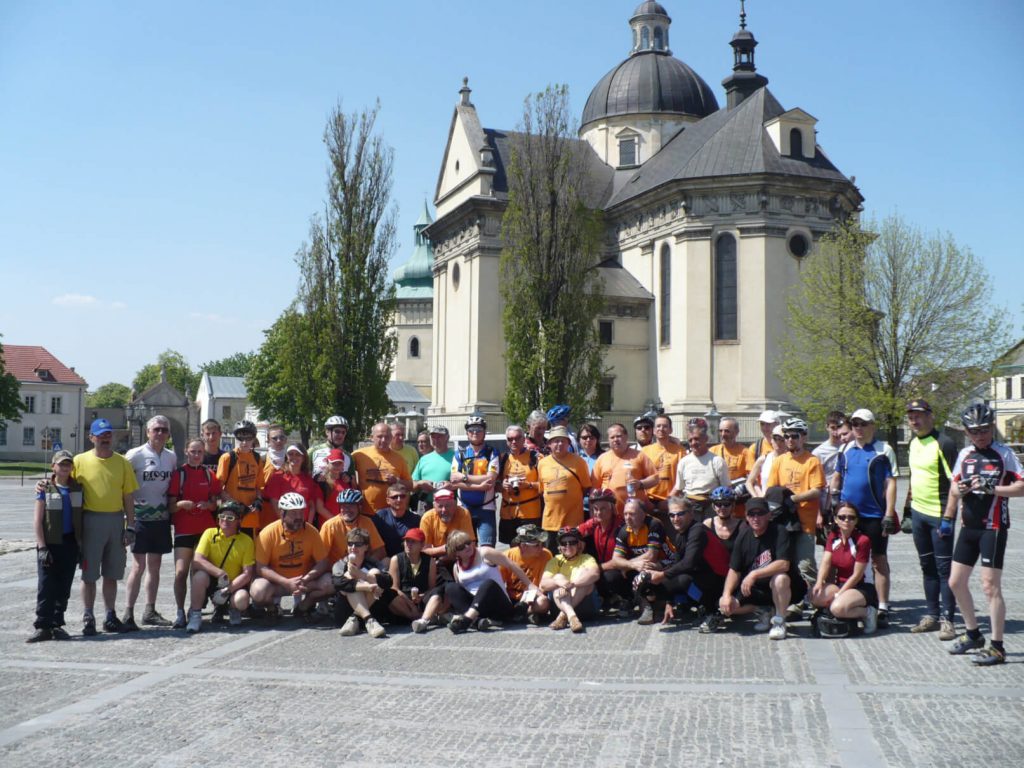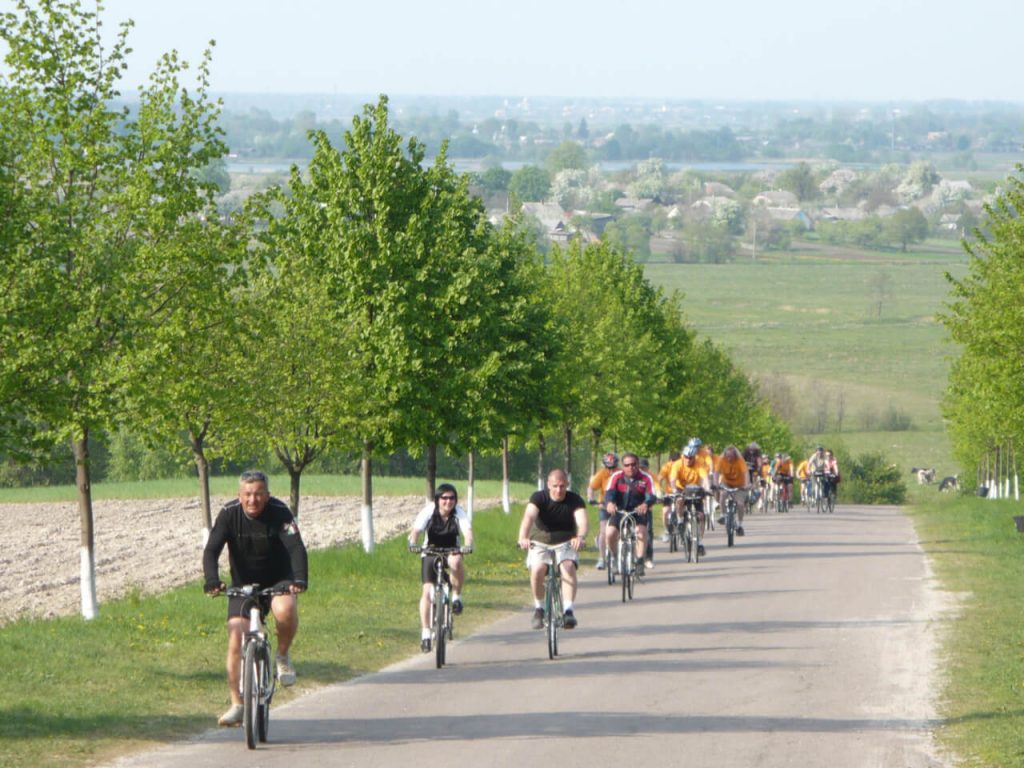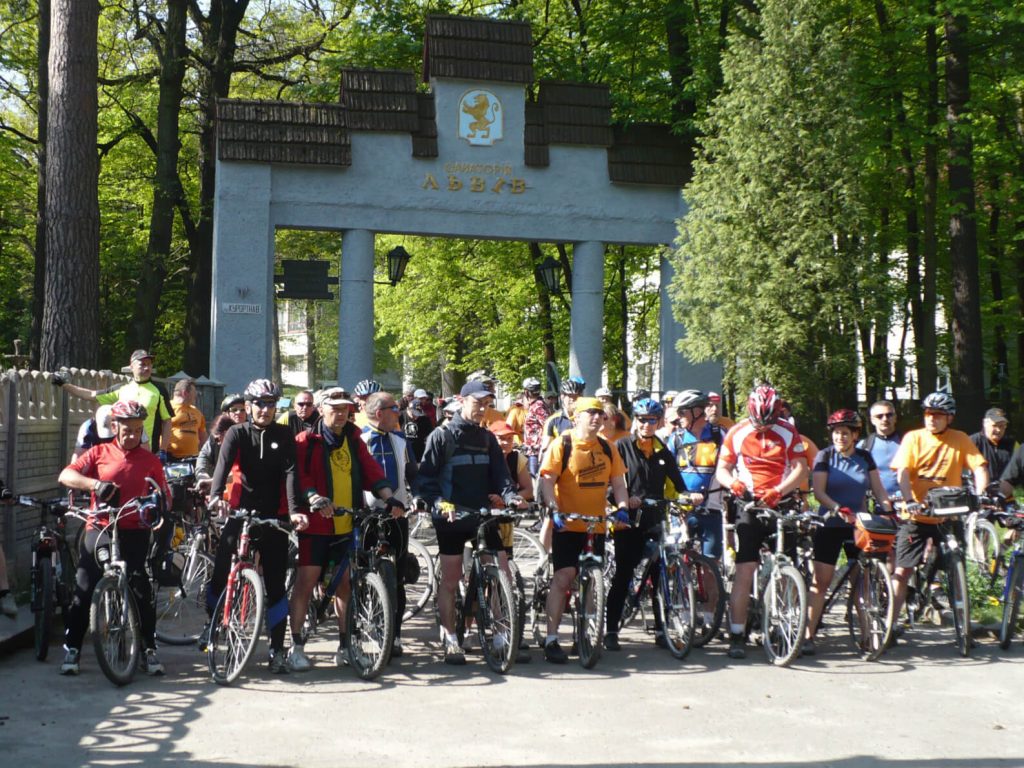Stage III
Hrebenne-Lwów
Stage III of the Roztocze Main Cycling Route continues through Ukrainian Eastern Roztocze. From the border crossing in Hrebenne – Rava-Ruska through Potelych, Krekhiv, Ivano-Frankowe (former Janów) to Briukhovychi – a district of Lviv. It is a fascinating area in terms of landscape, nature and culture.
Worth to see
Hrebenne
St Nicholas Orthodox church from 1685 (rebuilt in 1897) with the preserved polychrome from the 17th and 18th centuries, used both by Catholics and Greek Catholics; the wooden belfry from the late 18th century and the brick gate from the early 19th century; ponds that serve as a refugium for waterfowl.
Rawa Ruska
Murowany kościół pw. św. Józefa fundacji Andrzeja Rzeczyckiego zbudowany w latach 1770-1775; opuszczone zabudowania dawnego klasztoru reformatów założonego w roku 1725 przez Grzegorza Rzeczyckiego, starostę bełskiego i Józefa Głogowskiego wraz z budynkiem dawnego kościoła pw. św. Michała Archanioła, cerkiew pw. św. Jerzego, wymurowana w 1849 roku.
Potylicz
The wooden Orthodox church of the Holy Spirit from 1509 with the bell tower (one of the oldest existing wooden Orthodox churches in Europe) with the monumental polychrome from 1620-1640 and the iconostasis from the first half of the 20th century; the brick Orthodox church of the Holy Trinity; the brick church of St Stanislaus, consecrated in 1858; the mount of the transfiguration of Jesus with the chapel; the former quarry and the vantage point overlooking Potelych, as well as springs and ponds along the Tylica stream (a tributary of the Rata river).
Magierów
Ruins of the former Church of the Holy Trinity, consecrated in 1845, founded by the Belzecki family, and the quadrilateral market square with the remains of the 19th century buildings.
Żółkiew
The Collegiate Church of the Queen of Heaven and St Lawrence and St Stanislaus the Bishop, built in 1606 by the foundation of Stanislaw Żółkiewski (Żółkiewski’s family vault in the basement of the church); the Zhovkva Castle from the late 16th century, designed by Pawel Szczęśliwy (“Paolo the Lucky”), the Italian architect; the Dominican monastery complex and the church dating back to 1682, built by the foundation of Teofila Zofia Sobieska, neé Daniłowicz (currently the Greek Catholic church of the Assumption of the Blessed Virgin Mary and St Josaphat Kuntsevych); the former church of the Most Sacred Heart of Jesus and the convent of the Felician Sisters founded in 1627 by Zofia Daniłowicz, which since 1990 houses the Ukrainian Autocephalous Orthodox Church (Kiev Patriarchate) of St Lazarus; the former synagogue built in 1692–1700 in the Polish Renaissance style, an example of defensive architecture; the wooden Orthodox church of the Nativity of the Blessed Virgin Mary built in 1705 (the interior with paintings and the iconostasis dating back to 1708); the wooden Orthodox church of the Holy Trinity dating back to 1720 (iconostasis made in 1700).
Krechów
The three-storey monastery from the 18th century with richly decorated interior and the painting of Our Lady of Werchrata, founded in ca. 1618 by the Basilian monks, currently houses a rich collection of the monastery library and the chronicle of the monastery and the village of Krekhiv (small wooden Orthodox church of Our Lady in the courtyard).
Iwano Frankowe (dawny Janów)
The quadrilateral market square with brick buildings from the turn of the 19th and 20th centuries; the church with the bell tower of the Holy Trinity founded in 1614 by the Sworzowski foundation, where Konstancja Czartoryska, the mother of king Stanislaw August Poniatowski, is buried; the church of the Ascension of Jesus dating back to 1831 and the nature museum of the “Roztocze” Nature Reserve”.
Jaworowski Narodowy Park Przyrodniczy
The registered office of the Park; the Ivan Franko „Lelechiwka” educational trail (named after the Ukrainian poet), leading to the so-called “Black Lakes” – 4.5 km; the educational trail leading to the cave in Stradch, where remains of the 11th century underground monastery with corridors are preserved (the shrine with the statue of Our Lady in front of the entrance); the educational trail “Vereshchytsia” along the Vereshchytsia river, leading through forest communities in the river valley and beech woods on a plateau – 9 km.









